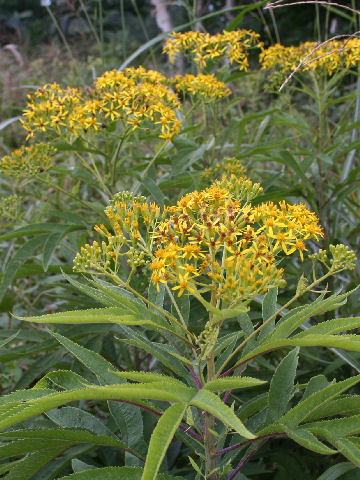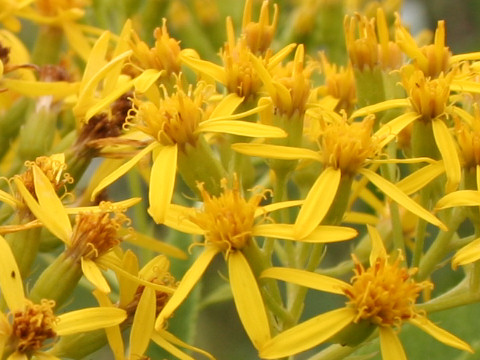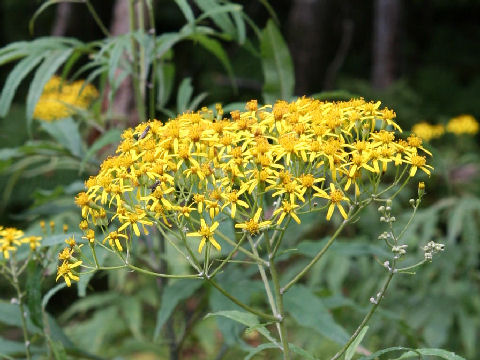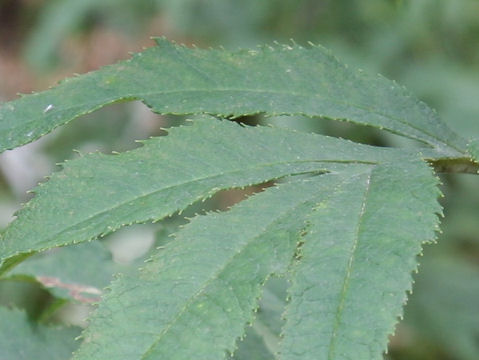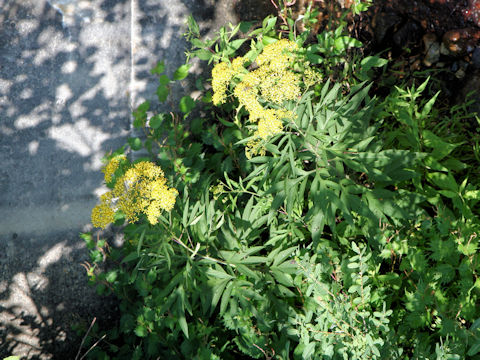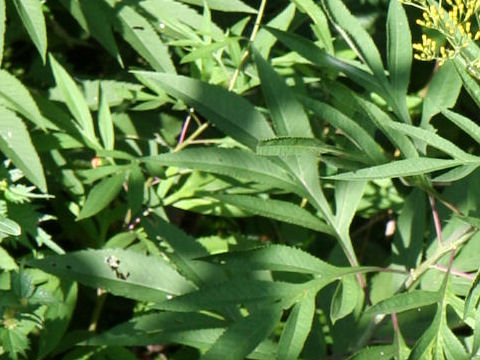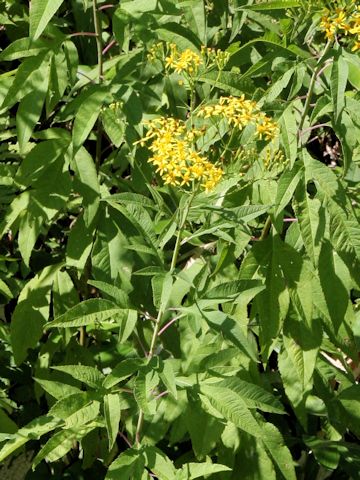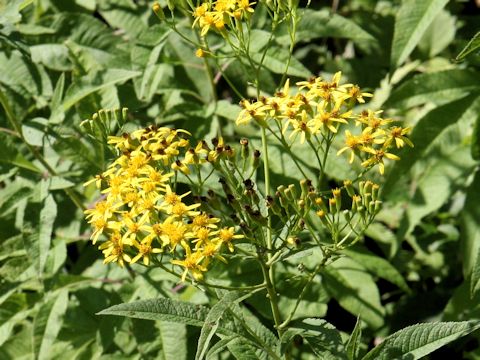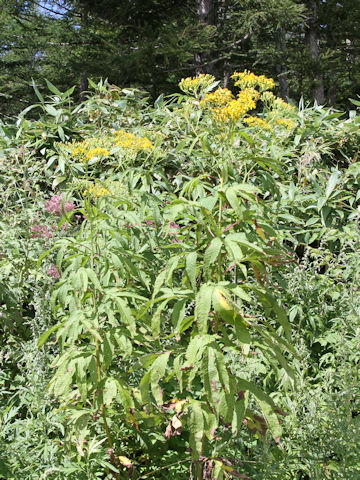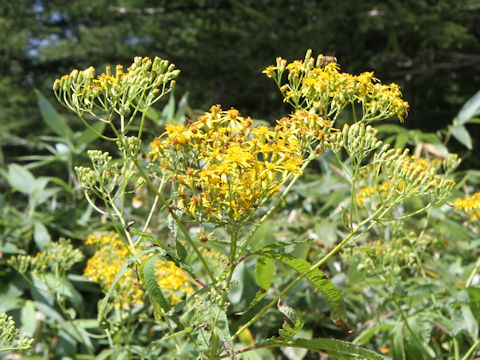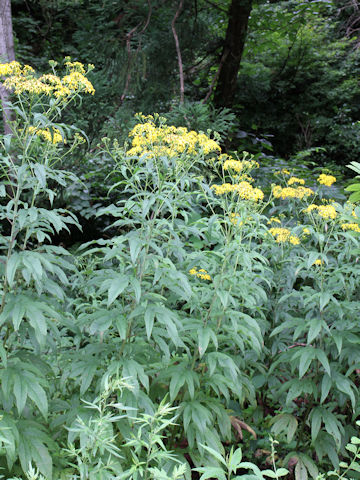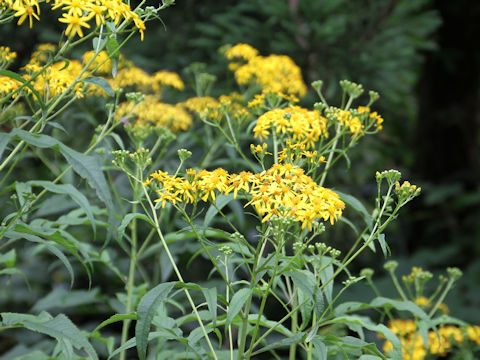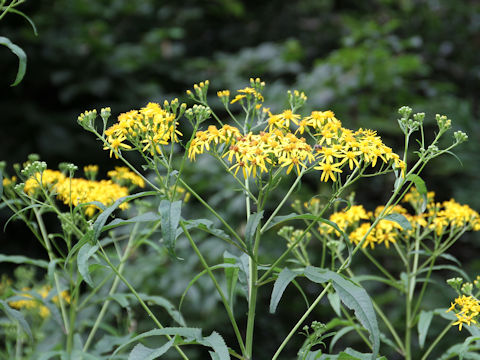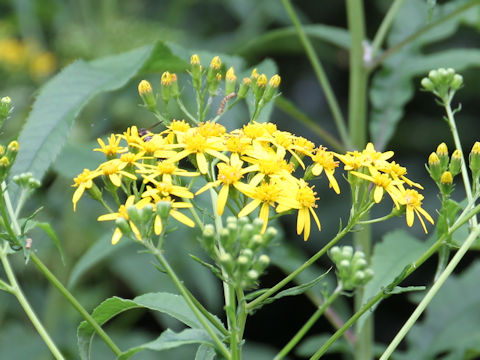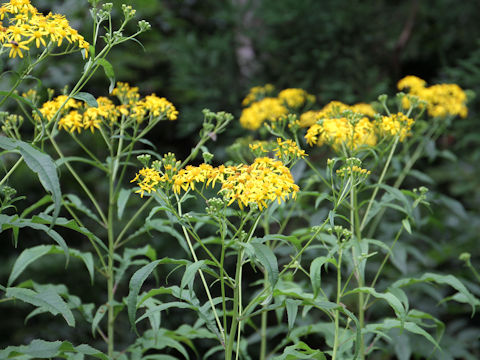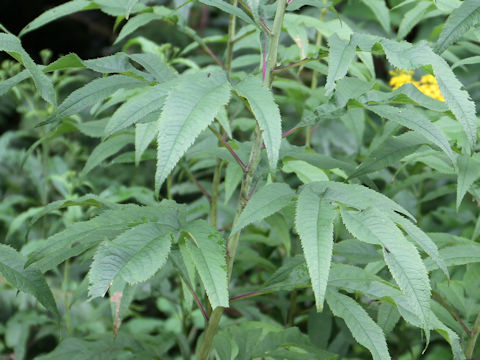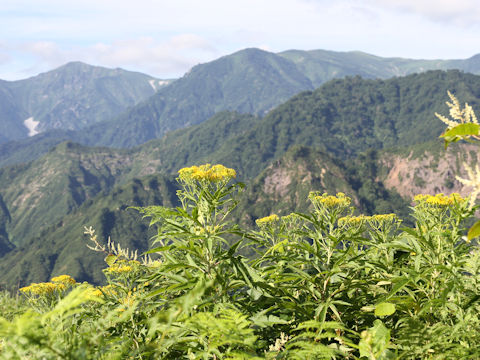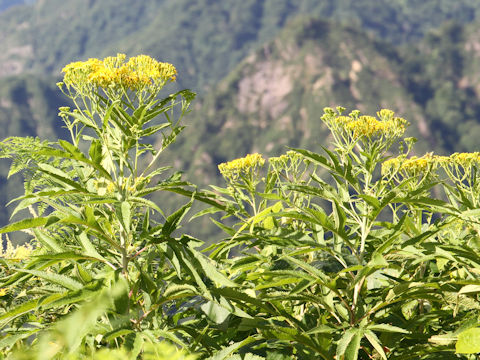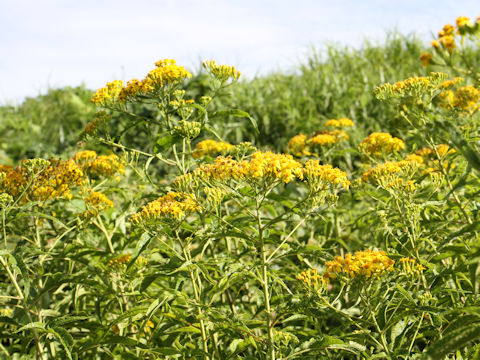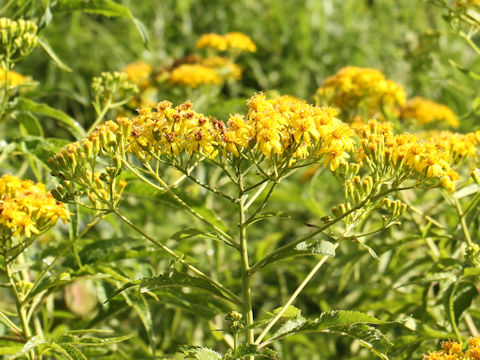
|
|
|
|
−− もっと見る(Show more)−−
−− 閉じる(Close) −−
|
|
|
|
わが国の本州、中部地方以北から北海道をはじめ、朝鮮半島や中国、それにサハリンやカムチャッカ半島に分布しています。山地の草原や湿地に生え、高さは1〜2メートルになります。葉は羽状に3〜7深裂し、互生します。7月から9月ごろ、茎頂に大きな複散房花序をだし、黄色い頭花を咲かせます。「きおん(黄苑)」に似ていますが、葉が深裂することで区別できます。和名は、強い香りで死者を蘇らせるといわれることから。若芽は食用にされます。中国語では「麻葉千里光(ma ye qian li guang)」と呼ばれます。 |
|
|
キク科キオン属の多年草で、学名は Senecio cannabifolius。英名は Aleutian ragwort。 |
|
|
The Aleutian ragwort (Senecio cannabifolius) belongs to Asteraceae (the Aster family). It is a perennial herb that is distributed from Chubu region of Honshu northward to Hokkaido in Japan, as well as the Korean Peninsula, China, Sakhalin, and the Kamchatka Peninsula. It grows in grasslands and wetlands in mountainous areas and grows 1-2 m high. The leaves deeply split pinnately with 3 to 7 lobes and are alternate. From July to September, large compound corymbs with yellow flowers bloom at the top of the stem. It is similar to the "Alpine ragwort" but can be distinguished by its deeply lobed leaves. The Japanese name comes from its strong fragrance that is said to revive the dead. The young shoots are edible. In Chinese, it is called "麻葉千里光" (ma ye qian li guang). |
|
|
[上・中1] 新潟県妙高市杉野沢「妙高高原」にて、2005年08月22日撮影。 [中2・中3] 長野県伊那市長谷黒河内「南アルプス林道」にて、2006年09月22日撮影。 [中4・中5] 長野県白馬村北城「八方尾根」にて、2006年08月25日撮影。 [中6・中7] 福島県昭和村佐倉にて、2012年08月26日撮影。 [中8・中9] 福島県北塩原村「グランデコ」にて、2014年09月07日撮影。 [中10〜中15] 山形県小国町玉川中里にて、2017年08月17日撮影。 [中16〜18・下] 山形県小国町小玉川にて、2018年08月19日撮影。 |

|
|
Shu Suehiro |
